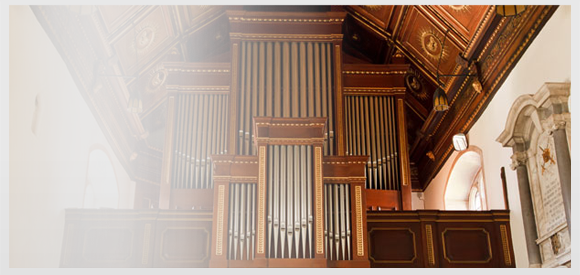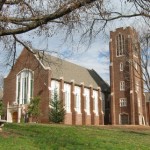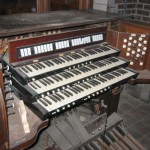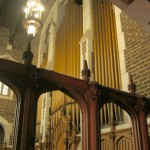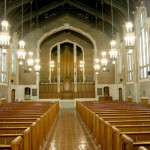University of Tennessee at Chattanooga —Patten Chapel
When the Methodist Episcopal Church began to explore the possibilities of
developing a central university in the South, Chattanoogans came forward to
work with the church in this effort. From the time of its founding in 1886
until 1969 the university was a private school.
Three years after its founding, the university was consolidated with another
church-related school, East Tennessee Wesleyan University at Athens, under
the name of Grant University. In 1907 the name University of Chattanooga
was adopted.
In 1969 the University of Chattanooga and a junior college, Chattanooga City
College, merged with the University of Tennessee, one of the oldest
land-grant universities in the nation, to form the University of Tennessee
at Chattanooga (UTC), one of four primary campuses in the university system.
Patten Chapel was dedicated in 1919. One of the most attractive religious
edifices in the city, it is a popular site for weddings in the area. The
dark red brick building seats 400 and has a floor of rich red pottery tile.
The Pilcher was installed in 1918 and dedicated soon after, in 1919. Many
an organist in Chattanooga studied organ on this instrument – mostly with
Isa McIlwraith Plettner. Norville Hall did some work on the organ at one
time. He may be responsible for the anachronistic German classic
nomenclature found on the few drawknobs left on the console, which lies in
state to the right of the chancel. The organ hasn’t been playable since
before 1970. A Hammond was used for many years; it was replaced in the
1980s by a self-contained 2-manual Rodgers.
Henry Pilcher’s Sons Pipe Organs, 1918, 3/26
GREAT
16′ “Space left for 16′ stop”
8′ Open Diapason
8′ Dulciana
8′ Gamba
8′ Melodia
4′ Octave
8′ “Space left for trumpet”
SWELL
16′ Bourdon
8′ Open Diapason
8′ Stopped Diapason
8′ Salicional
8′ Viol Celeste
8′ Aeoline
4′ Flute Harmonic
2′ Flautina
III Dolce Cornet (which also draws Flautina)
8′ Oboe
8′ Cornopean
8′ Vox Humana
CHOIR
8′ Violin Diapason
8′ Concert Flute
8′ Dolce
8′ Unda Maris
4′ Flute d’Amour
8′ Clarinet
PEDAL
16′ Open Diapason
16′ Bourdon
16′ Violone GT
16′ Soft Bourdon SW
8′ Great Flute 12 ext of 16′ Open Dia
8′ Dolce Flute 12 exit of 16′ Bourdon
The university and chapel history is from the UTC website; the stoplist is
from a copy of the factory specifications and was provided by Bill Barger.
